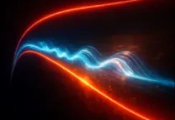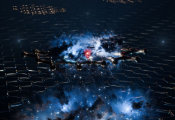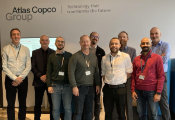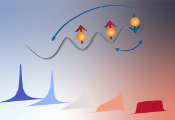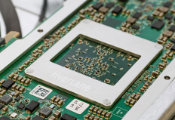ICFO: A Snapshot Into the Quantum World: Observing Single Atoms in a Grid of Light
May 28, 2024 -- Quantum science needs high-precision detection techniques to delve into the microscopic properties of materials. Lately, the so-called quantum-gas microscopes have been in the spotlight as powerful tools to solve the challenges of understanding quantum systems at the atomic level. These devices produce images of quantum gases with a very high resolution: every single atom is detected.
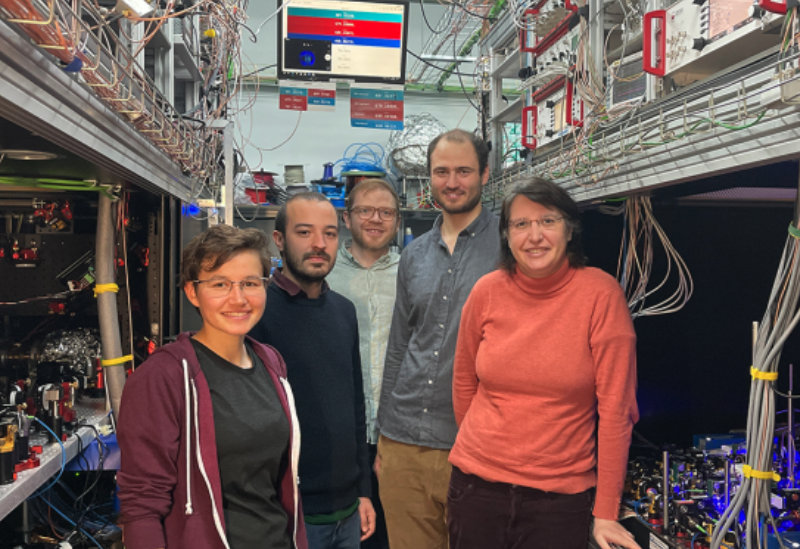
In these microscopes, lasers are used to generate a grid-like potential made up of light, known as an “optical lattice”. Hundreds of cold atoms are prepared inside this potential, with the atoms trapped in the sites of the grid. The lattice allows the atoms to hop around the sites and to interact with each other. This same grid potential is then used to freeze the position of the atoms and detect them with high resolution.
In a study published in Physical Review X Quantum, ICFO researchers Sandra Buob, Jonatan Höschele, Dr. Vasiliy Makhalov, Dr. Antonio Rubio-Abadal, led by ICREA Prof. at ICFO Leticia Tarruell report having built their own quantum-gas microscope, with high efficiency and reduced experimental complexity. The quantum-gas microscope of the group is unique because it can image quantum degenerate gases of strontium at the single-atom level, and is the first of its kind in Spain.
WHY STRONTIUM?
To build their microscope, the scientists chose strontium as their atom. Their choice of this atomic element was not at all arbitrary. Previous microscope setups relied on alkali atoms, like lithium and potassium, which have simpler properties in terms of their optical spectrum compared to alkaline-earth atoms such as strontium. This means that strontium offers more ingredients to play with in these experiments. Indeed, this element is currently being used in some of the most precise atomic clocks in the world thanks to its very precise energy levels.
With strontium one can also prepare a quantum gas very efficiently. The key process focuses mainly on laser cooling, a fundamental technique in all ultracold-atom experiments. By using the force of several laser beams, one can reduce the speed of the atoms until they reach a point where they are almost motionless, they barely move. A big advantage of strontium is that one can bring the temperature of a strontium gas from hundreds of degrees Celsius to a millionth of a degree above absolute zero in just few milliseconds. This means that quantum experiments can be performed much faster than those done with alkali elements.
In recent years, strontium’s unique properties have also made it a very popular element for applications in the fields of quantum computing and quantum simulation. A cloud of strontium atoms can be used as an atomic quantum processor, which could solve problems beyond the capabilities of current classical computers.
A QUANTUM SIMULATOR OF REAL CRYSTALS
In the experiment at ICFO, the atoms were cooled down to extremely low temperatures, where they reached the quantum regime. Here, the laws of quantum mechanics rule their behavior, and the atoms display new features like quantum superposition and entanglement. The researchers prepared the quantum gas, turned on the optical lattice, and trapped the atoms in the grid potential. “You can imagine it like an egg carton, where the individual sites are actually where you put the eggs. So instead of eggs we have atoms and instead of a carton we have the optical lattice”, explains Sandra Buob, first author of the article.
The atoms use quantum tunnelling to move around in the lattice, and they interact with other atoms whenever they coincide in the same site. Due to the periodic nature of the lattice, these quantum dynamics mimic those of electrons in certain materials. Studying these systems can hence help understand the complex behavior of certain materials, which is the key idea of quantum simulation. As Prof. ICREA Leticia Tarruell explains: “Quantum simulation can be used to boil down very complicated systems into simpler models to then understand open questions that current computers cannot answer, such as why some materials conduct electricity without any losses even at relatively high temperatures”.
Besides studying the properties of real materials, these quantum gases can reveal other phases of matter. In particular, strontium atoms prepared in the experiment can be driven into a superfluid phase, an exotic phase of matter that flows with no viscosity.
THE MICROSCOPE: DETECTING INDIVIDUAL ATOMS
After preparing the atomic cloud in a quantum state in the grid, the researchers were able to microscopically detect its properties. To do so, they first increased the grid potential to its maximum, to freeze the motion of the atoms. They then shone blue light into the atoms, which became excited and began shining fluorescent blue light. This fluorescent light was then collected by a camera, to obtain a picture of the atoms in the grid. From the image, the researchers could infer whether a lattice site was empty or occupied.
The team was also able to take videos of the atoms, and observed that, while the atoms should remain still during the imaging, they sometimes jumped to a nearby lattice site. This can be explained by the phenomenon of quantum tunnelling. “The atoms were “hopping” from one site to another. It was something very beautiful to see, as we were literally witnessing a direct manifestation of their inherent quantum behavior”, shares Buob.
Finally, the research group used their quantum-gas microscope to confirm that the strontium gas was a superfluid, a quantum phase of matter. “We suddenly switched off the lattice laser, so that the atoms could expand in space and interfere with each other. This generated an interference pattern, due to the wave-particle duality of the atoms in the superfluid. When our equipment captured it, we verified the presence of superfluidity in the sample.”, explains Dr. Antonio Rubio-Abadal.
All in all, the experiment consisted in bringing the strontium gas to the quantum regime, placing it in an optical lattice where atoms could interact and then applying the single atom imaging techniques. These three ingredients together make ICFO’s strontium quantum-gas microscope unique in its kind.
FUTURE PLANS FOR QUANTUM SIMULATION
As for the next steps, the team plans to demonstrate other phases of matter besides superfluidity. In particular, the authors believe that their microscope can be extended to the other isotopes of strontium. This marks a very exciting avenue, since one of these isotopes is a fermion, which is the same particle type as electrons, but where electrons display only two different states, known as spins, strontium can have as many as 10 different states. This means that a system of these fermions could perform quantum simulations of electrons in materials, as well as a new type of physics that may go well beyond this realm.
“It is a very exciting moment for quantum simulation”, shares Leticia Tarruell. “Now that we have added strontium to the list of available quantum-gas microscopes, we might be able to simulate more complex and exotic materials soon. Then, new physics and new phases are expected to arise. And we also expect to obtain much more computational power to use these machines as analog quantum computers”.


